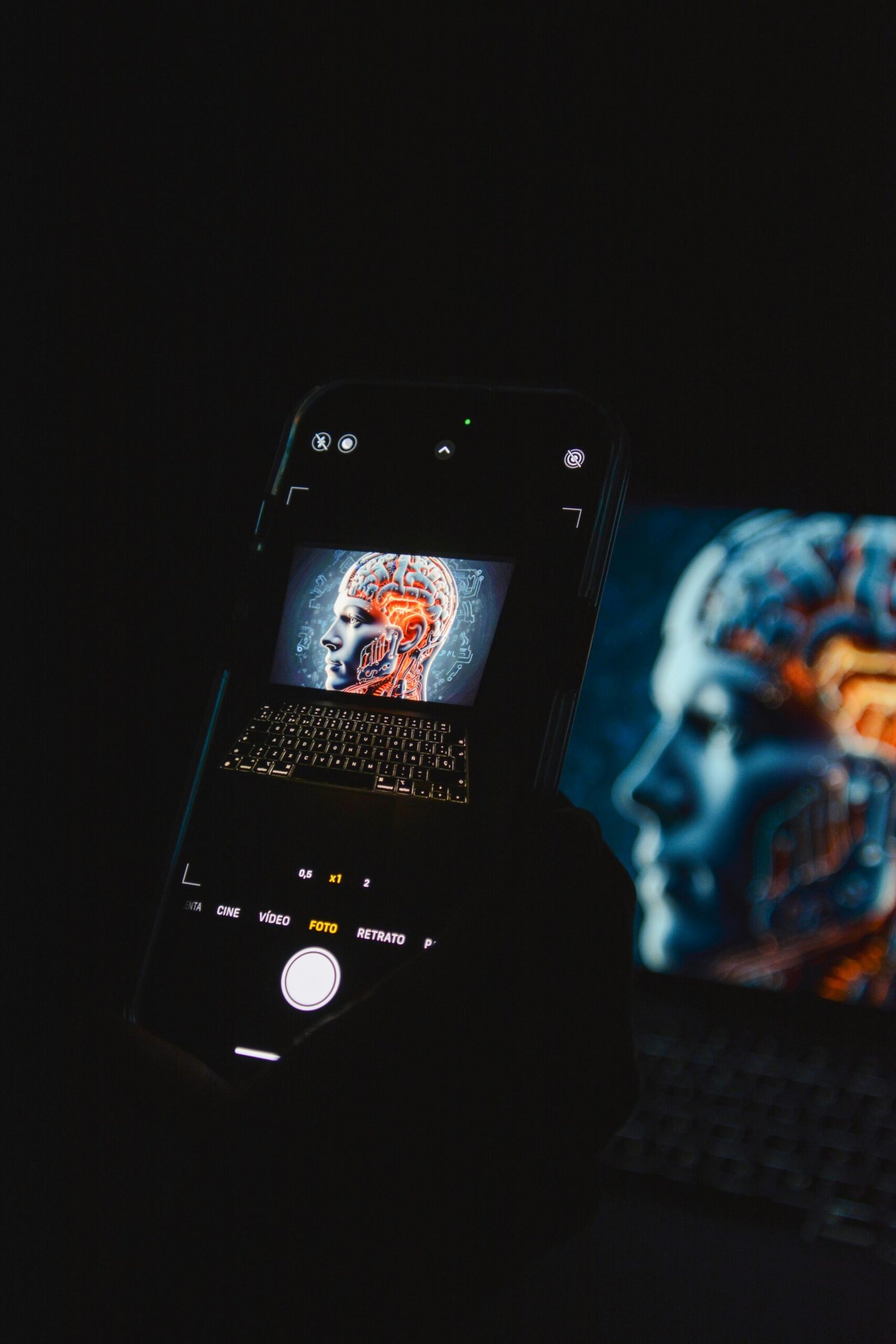Tech
Why 95% of AI Projects Fail: The Grim Reality Behind the Hype

In recent months, a startling statistic has rippled through the tech industry and business world alike: a new MIT study reveals that 95% of enterprise AI projects fail to deliver measurable financial returns. This finding has unsettled investors, executives, and AI enthusiasts, casting a shadow of doubt on the celebrated promise of artificial intelligence as a game-changer for business growth and innovation.
The Study Behind the Headline
Titled The GenAI Divide: State of AI in Business 2025, the MIT report analyzed over 300 AI initiatives, interviewed 150 leaders, and surveyed 350 employees involved in AI projects across industries. Despite enterprises investing between $30 to $40 billion into generative AI technologies, only about 5% of these AI pilots have succeeded in accelerating revenue or delivering clear profit improvements within six months of implementation.
However, this bleak 95% failure figure hides important nuances. The study defines “success” narrowly as achieving quantifiable ROI in this short timeframe, excluding other significant benefits AI might bring, such as improved efficiency, customer engagement, or cost savings. Still, the core issue remains: why are so many AI projects falling short of their financial potential?

Execution, Not Technology, Is the Root Problem
The study—and corroborating expert analysis—highlights that AI tools themselves are not to blame. Modern AI models, including advanced generative AI, are powerful and capable. The challenge lies in how organizations integrate AI into real-world workflows and translate its potential into business value.
Common pitfalls include:
- Lack of integration: AI tools often fail to adapt to the specific context of business processes, making them brittle and misaligned with day-to-day operations.
- Skill gaps: Employees struggle to use AI effectively, resulting in slow adoption or misuse.
- Overly ambitious internal builds: Many companies attempt to develop their own AI solutions, often producing inferior tools compared to third-party vendors, leading to higher failure rates.
- “Verification tax”: AI outputs frequently require human scrutiny due to errors, eroding expected productivity boosts.
Experts stress that companies that partner with specialized AI vendors and empower frontline managers, rather than relying solely on centralized AI labs, tend to be more successful in AI integration.
The Broader Landscape: Bubble Fears and Reality Checks
Amid these revelations, industry giants like Meta have frozen AI hiring after aggressive talent hunts, signaling caution in overinvested companies. OpenAI’s CEO Sam Altman has acknowledged the possibility of an AI market bubble fueled by excessive hype among investors, raising concerns of an imminent correction.
However, some companies demonstrate that AI-driven transformations are possible. For example, IgniteTech replaced 80% of its developers with AI two years ago and now boasts 75% profit margins, exemplifying how strategic adoption paired with organizational willingness can yield remarkable success.

What the 5% Are Doing Right
The minority of AI projects that do succeed share common traits:
- They focus on solving one specific pain point exceptionally well.
- They buy and integrate proven AI tools rather than building from scratch.
- They embed AI into workflows, allowing continuous learning and adaptation.
- They manage expectations and workforce changes thoughtfully.
Looking Ahead
The MIT study serves as a wake-up call that despite the AI revolution’s immense promise, AI is not a magic bullet. The real hurdle lies in execution—aligning technology with business strategy, training people, and redesigning processes.
As AI continues to evolve, organizations that ground their AI adoption in practical integration and realistic expectations will be the ones who break free from the 95% failure trap—and finally begin to harvest AI’s transformative benefits.
Business
Harvard Grads Jobless? How AI & Ghost Jobs Broke Hiring

America’s job market is facing an unprecedented crisis—and nowhere is this more painfully obvious than at Harvard, the world’s gold standard for elite education. A stunning 25% of Harvard’s MBA class of 2025 remains unemployed months after graduation, the highest rate recorded in university history. The Ivy League dream has become a harsh wakeup call, and it’s sending shockwaves across the professional landscape.

Jobless at the Top: Why Graduates Can’t Find Work
For decades, a Harvard diploma was considered a golden ticket. Now, graduates send out hundreds of résumés, often from their parents’ homes, only to get ghosted or auto-rejected by machines. Only 30% of all 2025 graduates nationally have found full-time work in their field, and nearly half feel unprepared for the workforce. “Go to college, get a good job“—that promise is slipping away, even for the smartest and most driven.
Tech’s Iron Grip: ATS and AI Gatekeepers
Applicant tracking systems (ATS) and AI algorithms have become ruthless gatekeepers. If a résumé doesn’t perfectly match the keywords or formatting demanded by the bots, it never reaches human eyes. The age of human connection is gone—now, you’re just a data point to be sorted and discarded.
AI screening has gone beyond basic qualifications. New tools “read” for inferred personality and tone, rejecting candidates for reasons they never see. Worse, up to half of online job listings may be fake—created simply to collect résumés, pad company metrics, or fulfill compliance without ever intending to fill the role.
The Experience Trap: Entry-Level Jobs Require Years
It’s not just Harvard grads who are hurting. Entry-level roles demand years of experience, unpaid internships, and portfolios that resemble a seasoned professional, not a fresh graduate. A bachelor’s degree, once the key to entry, is now just the price of admission. Overqualified candidates compete for underpaid jobs, often just to survive.
One Harvard MBA described applying to 1,000 jobs with no results. Companies, inundated by applications, are now so selective that only those who precisely “game the system” have a shot. This has fundamentally flipped the hiring pyramid: enormous demand for experience, shrinking chances for new entrants, and a brutal gauntlet for anyone not perfectly groomed by internships and coaching.
Burnout Before Day One
The cost is more than financial—mental health and optimism are collapsing among the newest generation of workers. Many come out of elite programs and immediately end up in jobs that don’t require degrees, or take positions far below their qualifications just to pay the bills. There’s a sense of burnout before careers even begin, trapping talent in a cycle of exhaustion, frustration, and disillusionment.
Cultural Collapse: From Relationships to Algorithms
What’s really broken? The culture of hiring itself. Companies have traded trust, mentorship, and relationships for metrics, optimizations, and cost-cutting. Managers no longer hire on potential—they rely on machines, rankings, and personality tests that filter out individuality and reward those who play the algorithmic game best.
AI has automated the very entry-level work that used to build careers—research, drafting, and analysis—and erased the first rung of the professional ladder for thousands of new graduates. The result is a workforce filled with people who know how to pass tests, not necessarily solve problems or drive innovation.
The Ghost Job Phenomenon
Up to half of all listings for entry-level jobs may be “ghost jobs”—positions posted online for optics, compliance, or future needs, but never intended for real hiring. This means millions of job seekers spend hours on applications destined for digital purgatory, further fueling exhaustion and cynicism.
Not Lazy—Just Locked Out
Despite the headlines, the new class of unemployed graduates is not lazy or entitled—they are overqualified, underleveraged, and battered by a broken process. Harvard’s brand means less to AI and ATS systems than the right keyword or résumé format. Human judgment has been sidelined; individuality is filtered out.

What’s Next? Back to Human Connection
Unless companies rediscover the value of human potential, mentorship, and relationships, the job search will remain a brutal numbers game—one that even the “best and brightest” struggle to win. The current system doesn’t just hurt workers—it holds companies back from hiring bold, creative talent who don’t fit perfect digital boxes.
Key Facts:
- 25% of Harvard MBAs unemployed, highest on record
- Only 30% of 2025 grads nationwide have jobs in their field
- Nearly half of grads feel unprepared for real work
- Up to 50% of entry-level listings are “ghost jobs”
- AI and ATS have replaced human judgment at most companies
If you’ve felt this struggle—or see it happening around you—share your story in the comments. And make sure to subscribe for more deep dives on the reality of today’s economy and job market.
This is not just a Harvard problem. It’s a sign that America’s job engine is running on empty, and it’s time to reboot—before another generation is locked out.
News
Governments Worldwide Push for Mandatory Digital IDs by 2026

Governments around the world are accelerating their push toward national digital identification systems, promising convenience and security while raising concerns over privacy, surveillance, and government control. By 2026, the European Union will require every member state to implement a national digital identity wallet, and the United Kingdom plans to make digital ID mandatory for the “Right to Work” by the end of its current Parliament.
United Kingdom Leads the Charge
In September 2025, British Prime Minister Keir Starmer announced plans for a free, government-backed digital ID system for all residents. The initiative—temporarily called “BritCard”—will become a mandatory requirement for employment checks, designed to curb illegal migration and simplify access to services such as tax filing, welfare, and driving licenses.
While the government argues that digital ID will make it “simpler to prove who you are” and reduce fraud, civil liberties groups have raised alarms. Big Brother Watch called the plan “wholly un-British,” warning it would “create a domestic mass surveillance infrastructure”.
Officials state the new system will use encryption and biometric authentication, with credentials stored directly on smartphones. For those without smartphones, the plan includes support programs and alternatives.
Europe Mandates a Digital Identity Wallet
Across the European Union, the Digital Identity Wallet—developed under the eIDAS 2.0 Regulation—will become law by 2026, obligating all 27 member states to provide citizens with a secure app that integrates identification, travel, and financial credentials. The European Commission envisions the wallet as a single login for public and private services across borders, from banking to healthcare, using cryptographic protections to ensure data privacy.

United States Expands Mobile IDs
The United States does not have a national digital ID system but is quickly adopting state-level mobile IDs. More than 30 states have launched or are testing digital driver’s licenses stored on phones via Apple Wallet, Google Wallet, or state apps. States such as Louisiana and Arizona already accept mobile IDs for TSA airport checks, and similar legislation is advancing in New Jersey, Pennsylvania, and Georgia.
Meanwhile, private firms like ID.me and CLEAR have enrolled millions of Americans in digital identity programs, often partnering with government agencies and raising questions about data use and inclusion for low-income groups.
Global Adoption and UN Involvement
The trend extends well beyond Western nations. China’s national digital ID, launched in 2025, is connected to its social credit system, combining financial records, travel rights, and online behavior tracking. Singapore, South Korea, Nigeria, and the UAE have each implemented government-backed ID systems that link citizens’ digital credentials to public and private services ranging from taxes to utilities.
The movement aligns with the United Nations’ goal of providing “legal identity for all by 2030,” supported by the World Bank’s ID4D (Identification for Development) initiative, which funds digital identity infrastructure in over 100 countries.
The Promise and the Peril
Proponents argue that digital IDs offer protection against identity fraud, save governments billions in paperwork, and bring roughly one billion undocumented citizens into legal recognition systems globally. Estonia, for instance, saves an estimated 2% of its GDP annually through digitized services, while India’s Aadhaar ID has reduced welfare fraud by $10 billion per year.
However, critics warn that centralizing identity creates unprecedented control risks. Once personal data, biometrics, and financial access are linked, governments could more easily restrict rights or track behavior.
As one analyst put it, the shift may mark “a turning point in the balance of power between citizens, corporations, and the state”.
The global rollout of digital IDs is reshaping the definition of identity itself—raising the question of whether convenience and efficiency come at too high a cost to freedom.
Tech
Massive Global Outage Cripples Major Websites and Online Services

A widespread global outage on Monday disrupted access to thousands of popular websites and digital platforms, sparking confusion and frustration among users worldwide. From social media giants to e-commerce platforms, financial portals, and even news outlets, the internet temporarily went dark for millions of people.

The outage began around 8:00 a.m. CDT, affecting users across North America, Europe, Asia, and parts of Africa. Initial reports suggest the incident may stem from a major disruption in a core internet infrastructure provider — possibly linked to a content delivery network (CDN) failure or a major domain name system (DNS) malfunction.
Major Services Impacted
Websites like Amazon, YouTube, and major news publishers experienced significant downtime, with many displaying server errors or failing to load completely. Streaming services, banking apps, and communication platforms such as Slack and Zoom were also hit, paralyzing workflows and transactions globally.
Companies quickly took to social media to acknowledge the issue. “We’re aware of a widespread internet disruption affecting multiple services and are working urgently to identify the cause,” one major cloud provider said in a statement.
Economic Ripple Effects
Experts warn that even short-term outages on this scale can cause enormous economic damage. “Every minute of downtime for global websites can translate to millions in lost revenue,” said cybersecurity analyst Reuben Chen. “It also highlights how dependent modern systems are on a relatively small number of infrastructure providers.”
Stock market and cryptocurrency trading platforms experienced temporary halts, while travel and logistics companies reported booking delays and communication breakdowns.

Unfolding Investigation
As of this afternoon, technicians and cybersecurity experts are still tracing the root cause of the outage. Early investigations indicate a possible software update gone wrong, though some analysts have not ruled out a coordinated cyberattack on critical internet backbones.
Government agencies in several countries have initiated inquiries into the disruption’s scope and origin, emphasizing the fragility of global digital networks that power everything from commerce to healthcare.
By late afternoon, services were beginning to recover in phases, though users continued to report intermittent access issues. The incident serves as a stark reminder of the interconnected nature of the internet — and how a single point of failure can send shockwaves through the digital world.

 Entertainment4 weeks ago
Entertainment4 weeks agoWicked Sequel Disappoints Fans: Audience Verdict on For Good

 Entertainment4 weeks ago
Entertainment4 weeks agoAriana & Cynthia Say They’re in a ‘Non‑Demi Curious, Semi‑Binary’ Relationship… WTF Does That Even Mean?

 News4 weeks ago
News4 weeks agoMexico Bans Dophin Shows Nationwide

 Entertainment3 weeks ago
Entertainment3 weeks agoColombia’s ‘Doll’ Arrest: Police Say a 23-Year-Old Orchestrated Hits, Including Her Ex’s Murder

 Entertainment4 weeks ago
Entertainment4 weeks agoHow The Grinch Became The Richest Christmas Movie Ever

 Entertainment4 weeks ago
Entertainment4 weeks agoMiley Cyrus Is Engaged to Maxx Morando

 News4 weeks ago
News4 weeks agoUS May Completely Cut Income Tax Due to Tariff Revenue

 Business3 weeks ago
Business3 weeks agoLuana Lopes Lara: How a 29‑Year‑Old Became the Youngest Self‑Made Woman Billionaire









































